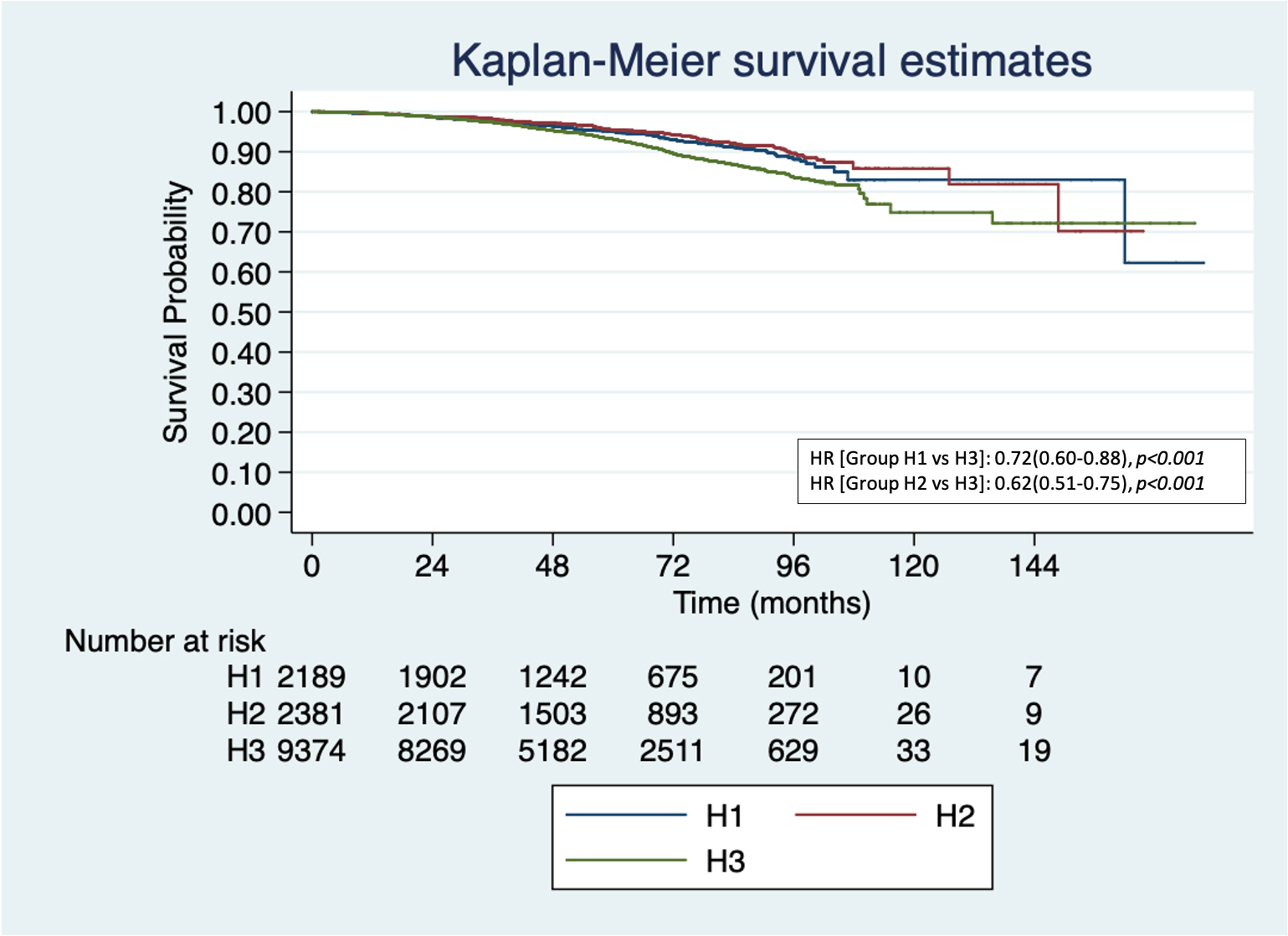Back
Poster, Podium & Video Sessions
Podium
PD54: Prostate Cancer: Localized: Surgical Therapy III
PD54-02: Revisiting current National Comprehensive Cancer Network (NCCN) high risk prostate cancer stratification: A National Cancer Database analysis
Monday, May 16, 2022
7:10 AM – 7:20 AM
Location: Room 245
HARSHIT GARG*, FURKAN DURSUN, Ahmed Elshabrawy, Hanzhang Wang, MICHAEL LISS, DHARAM KAUSHIK, Ahmed Mansour, SAN ANTONIO, TX

Harshit Garg, MD
FELLOW
University of Texas Health, San Antonio
Podium Presenter(s)
Introduction: High risk prostate cancer, as stratified using current risk stratification tools, is a heterogenous population with variable outcomes. This study aimed to assess the impact of the individual high-risk factors in prostate cancer patients undergoing radical prostatectomy and their prognostic ability.
Methods: We queried the National Cancer Database from 2004 to 2017 for patients with non-metastatic high risk prostate cancer who underwent radical prostatectomy and stratified them as Group H1: Prostate specific antigen(PSA)>20ng/ml alone, Group H2: only cT3a stage and Group H3: Gleason Grade (GG) group 4 or 5 as per NCCN guidelines (v1.2022). These groups were compared for oncological and survival outcomes.
Results: A total of 16,172 high risk prostate cancer patients were included and stratified as Group H1 (n=2,499), Group H2 (n=2,674) and Group H3 (n=10,999). As compared to group H3, the pathological GG group < 3 on radical prostatectomy specimen was significantly higher in group H1 (i.e. 52.7% vs 15.6%, p<0.001) and group H2 (i.e. 55.2% vs 15.6%, p<0.001) respectively. Furthermore, the pathological stage pT3b or higher [22.7% in group H1, 12.4% in group H2 and 24.8% in group H3,p < 0.001], lymph nodal positive disease (pN1) [10.3% in group H1, 7.7% in group H2 and 12% in group H3,p < 0.001] and rate of adjuvant therapy [20.3% in group H1,18.5% in group H2 and 23.9% in group H3, p=0.001] were significantly lower in group H1 and group H2 as compared to group H3. In terms of overall survival (OS), 5-year OS was significantly better in group H1 as compared to group H3 [95.0% vs 93.1%, p<0.001] and group H2 as compared to group H3 [95.4% vs 93.1%, p<0.001].[Figure 1]
Conclusions: PSA>20ng/ml or cT3a stage in isolation have better oncologic and survival outcomes as compared to GG>3 disease and sub- stratification of ‘High risk’ category may lead to better patient prognostication
Source of Funding: None

Methods: We queried the National Cancer Database from 2004 to 2017 for patients with non-metastatic high risk prostate cancer who underwent radical prostatectomy and stratified them as Group H1: Prostate specific antigen(PSA)>20ng/ml alone, Group H2: only cT3a stage and Group H3: Gleason Grade (GG) group 4 or 5 as per NCCN guidelines (v1.2022). These groups were compared for oncological and survival outcomes.
Results: A total of 16,172 high risk prostate cancer patients were included and stratified as Group H1 (n=2,499), Group H2 (n=2,674) and Group H3 (n=10,999). As compared to group H3, the pathological GG group < 3 on radical prostatectomy specimen was significantly higher in group H1 (i.e. 52.7% vs 15.6%, p<0.001) and group H2 (i.e. 55.2% vs 15.6%, p<0.001) respectively. Furthermore, the pathological stage pT3b or higher [22.7% in group H1, 12.4% in group H2 and 24.8% in group H3,p < 0.001], lymph nodal positive disease (pN1) [10.3% in group H1, 7.7% in group H2 and 12% in group H3,p < 0.001] and rate of adjuvant therapy [20.3% in group H1,18.5% in group H2 and 23.9% in group H3, p=0.001] were significantly lower in group H1 and group H2 as compared to group H3. In terms of overall survival (OS), 5-year OS was significantly better in group H1 as compared to group H3 [95.0% vs 93.1%, p<0.001] and group H2 as compared to group H3 [95.4% vs 93.1%, p<0.001].[Figure 1]
Conclusions: PSA>20ng/ml or cT3a stage in isolation have better oncologic and survival outcomes as compared to GG>3 disease and sub- stratification of ‘High risk’ category may lead to better patient prognostication
Source of Funding: None


.jpg)
.jpg)